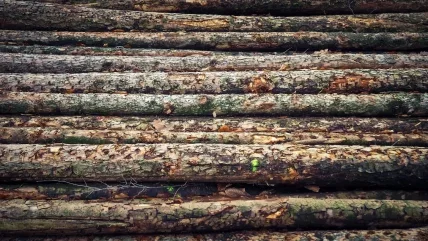
The flicker of optimism among Irish mills this time last year has gathered substance, fanned by the oxygen of improved business confidence generally and stronger UK demand. “I’m extremely optimistic,” one sawmiller told TTJ, while another said he was “feeling positive”.
UK demand for fencing in particular is keeping mills busy and one contact predicted there would be no let-up until summer 2015. A busy fourth quarter last year depleted stocks and then work following the storms in February consumed any product that had built up. “There was no stock then for the Easter holiday so we’ve been playing catch-up, and that’s going to go all the way through. I can’t see this stopping before this time next year,” one sawmiller said.
Even if the market did slow down in November it would be only for the six weeks or so until the new year, and it would provide a respite for traders to build their stocks. He added that the strong demand for fencing timber would hit pallet manufacturers hard during their busy time from October to Christmas. “The timber just won’t be there,” he said.
Another pressure was that people wanted goods immediately and weren’t prepared to wait three weeks.
Although there is some anecdotal evidence of lead times for fencing being extended, the mills TTJ spoke to said they were containing their lead times by concentrating on existing customers.
“If someone new came in we probably wouldn’t take them on,” one said.
Some customers were now more mindful of buying further ahead and one contact believed contracts would become more popular. While the steady business is welcome, it’s causing some haulage headaches. “We used to be able to pick up the phone at 5pm on a Monday and book three lorries for Tuesday morning. Now we’re having to take what we can get when we get it,” said a contact.
Although the Irish economy has improved and some optimism has returned, the vast bulk of mills’ output will continue to be exported to the UK.
“There’s talk of an annual need for 15,000 house starts [in Ireland] but in terms of timber use that’s a small volume. It’s not something that’s going to disturb supply to the UK,” said one sawmiller.
The severe winter weather that has lifted business for Irish mills will also potentially bring them more raw material, although the extra volumes from private forests have not been quantified yet.
For Coillte, storm Darwin on February 12 brought down around 1 million m³ – a third of the organisation’s annual cut – in its forests in the south-west. Most of the timber was blown over, rather than snapped, so Coillte is optimistic of good sawlog recovery. This timber will be incorporated into Coillte’s offer to the market this year and next, but will not increase the overall volume available.
“We will even it out to keep continuity of supply for customers,” a spokesperson said. Wet weather in the spring had hindered harvesting on some sites but access has now improved.
Irish mills are also buoyed by their continued success in the UK market.
“The fact that the gap in pricing between imports and home-grown has narrowed to as little as £20, and even less on some products, and we haven’t conceded market share is very much a sign that home-grown timber has consolidated its position in the market,” one sawmiller said.
“Moving into Q2 importers took the strategy of maintaining prices in the hope they would claw back market share but April is behind us and we haven’t seen any impact on our own market share so I don’t think it’s an issue.”
Woodfab’s new line in commissioning phase
Woodfab has nearly finished commissioning its new main production line.
The Brodbaek line replaces the Linck profiling line which was destroyed in a fire in August 2010. Woodfab’s added-value lines, including kilns, treatment plant and planing line, were not affected by the fire and continued to operate.
The new facility offers improved optimisation and, like its predecessor, it is a heavy fencing line, and will also produce some carcassing and pallet timber.
Commissioning began in late December and is expected to be completed during the summer.
Employment underpins economic recovery
The Irish economy should grow by 1.7% this year, according to the European Commission. In its Spring Economic Forecast, the Commission predicts the economic recovery will strengthen further next year, with GDP expected to rise by 3%.
The projections are slightly lower than the expectations of Ireland’s Central Bank. In April it forecast GDP growth of 2% this year and 3.2% next year.
Higher employment, a modest reduction in the saving rate and an improving construction sector should support domestic demand, which is expected to make a positive contribution to growth for the first time since 2007.
The report says the “robust performance” of the labour market remains the most visible sign of Ireland’s recovery. Unemployment was estimated at 11.8% in March, bringing it on par with the EU average for the first time since October 2008. Of particular note is the continued reduction in the number of long-term unemployed, which fell by 9.3% in the year to March 2013; and in the number of youth unemployed, which fell by 8.8%.
However, the Commission warns that Ireland’s economy is still vulnerable.
Given Ireland’s dependence on imported energy – around 85% of its needs – it could be susceptible to any price changes resulting from the crisis in Ukraine.
Impaired access to finance and legacy debts continue to pose risks for SMEs.





